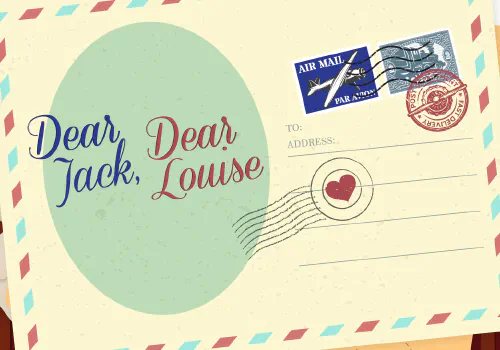By Robert Burgan
Sandy Wilson’s The Boy Friend (1954) is a recipe for gleeful romance: Take a rich young girl, a poor boy who’s employed as a messenger, a group of happy flappers, some well-intentioned adults. Mix carefully with a new romance and a re-kindled one. Add “jazzy” music. Put dreams in the lyrics (“I Could Be Happy with You”) and exuberance and joy in the dances (“Won’t You Charleston with Me?”). Shake well, and you have Sandy Wilson’s skillfully inventive spoof of 1920s musicals.
As Sheridan Morley noted in Spread a Little Happiness (his history of the first 100 years of the British musical), Wilson in his “brilliantly mocking tribute to 1920s musicals . . . was in fact parodying a genre which had started with [1894’s] A Gaiety Girl” ([Thames and Hudson, 1987], 52). A Gaiety Girl led to some fourteen copies (including The Shop Girl, The Circus Girl, and The Runaway Girl) which were very successful in England for the next two decades.
Two musical successes in London in the 1920s should also be noted as part of the theatrical heritage of The Boy Friend: The Girl Friend (1927) and Mr. Cinders (1929).
Sheridan Morley wrote of The Girl Friend: “[It was a musical] which more than any other lent itself to the loving parody treatment that was—almost thirty years later–Sandy Wilson’s The Boy Friend, though . . . Mr. Wilson . . . was always careful to point out that he was parodying and celebrating a whole genre of flapper romances rather than any single period score” (52).
Of the classic English musical, Mr. Cinders, Morley noted:
“[It] was an enchanting small-scale reversal of the Cinderella legend, . . . a lyrical romance between an impoverished young bounder and the millionaire’s daughter he mistakes for a parlourmaid. . . . Few shows can ever have spread so much happiness from such a simple role reversal” (53).
From these models, Wilson learned that small can be beautiful, and he created, according to Morley:
“A perfect miniature piece, and its score, ranging from the hauntingly romantic ‘Room in Bloomsbury’ to the splendidly comic ‘Never Too Late to Fall in Love,’ is one that any composer of the 1920s would have been proud to acknowledge. ‘There are,’ Noel Coward told Sandy Wilson shortly after the opening of The Boy Friend in 1954, ‘only three good lyricists left: you, me, and Cole Porter.’
“[It] became a triumph . . . a musical world where nothing could be taken too seriously . . . so perfect in its sense of period that many theatre goers believe it dates from the 1920s” (133).
And it should be acknowledged that Wilson influences include United States theatrical successes, as well as those from England. On this side of “the pond,” audiences were delighted by a series of gentle but lively musical comedies that celebrated romance in song and dance. In the U.S., a series of intimate musicals (the Princess Theater shows) written by Jerome Kern, Guy Bolton, and P. G. Wodehouse attracted audiences away from the large scale spectacle-driven offerings available from producers like Florenz Ziegfeld and his imitators. The Princess Theater shows (Very Good Eddie, Oh Boy!, Oh Lady! Lady, and others) gave audiences simplicity, charm, freshness, and humor born of wit not out of extraneous gags and slapstick. And, of course, the music of Jerome Kern is an influence clear in several of Wilson’s songs in The Boy Friend.
Bill Zeitung, in his notes for the 1955 recording (RCA, original cast recording, 1955) writes:
“The Boy Friend is one of those curious phenomena of the show-business world which appear all-too-rarely to reaffirm our faith in the entertaining quality of the theater. It is, in the first place, a British play: but its international locale and flavor—it takes place on the French Riviera and numbers British, Americans, and French among its characters—contribute to a fully-rounded and hilarious picture of what went on, consciously and unconsciously in those now-faded years.
The British production of The Boy Friend has proved to be perhaps the most sensational event since the Little Princes lost their heads. Authored by Sandy Wilson, who had previously contributed skits and sketches to various revues, it was first presented by the Players’ Theatre for the enjoyment of its members in its small theater club. Its success was so phenomenal that it was soon moved . . . to Wyndham’s Theater in West End London, where it . . . enjoyed one of the most amazing runs in the history of the British musical theater.”









